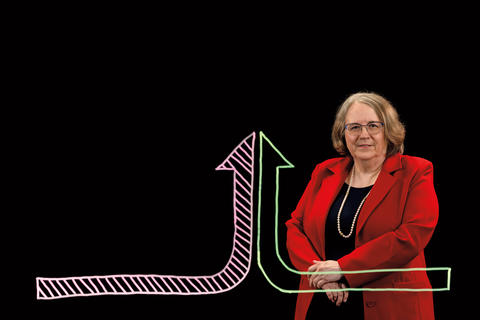
Bicultural consumers find appeal in paradox brands
Wednesday, May 4, 2022
Over the last several decades, the U.S. bicultural market has exploded in size. Biculturals now make up approximately one-third of the country’s population and wield more than $4 trillion in buying power. But while American companies are keenly aware of this growth, many still struggle with how to connect with the market.
New research from Carlson School of Management Professor Deborah John offers a solution to that puzzle. From her perspective, it comes down to understanding the psychology of bicultural consumers, particularly the concept of “cognitive flexibility.”
John explains that “cognitive flexibility” is a hallmark of many bicultural consumers. “Biculturals live in two worlds,” she notes. “For example, Hispanic Americans engage with both Hispanic and American cultures, which have contradictory perspectives. Hispanic culture places a heavy emphasis on family and interdependence, while American culture stresses independence and individuality.”
“Biculturals continually negotiate these sorts of differences, which results in greater cognitive flexibility,” she adds. “They can see things from different perspectives and engage with contradictory viewpoints very well.”
How does this relate to marketing? John’s research shows that certain types of brands—which she terms “paradox brands”—are particularly appealing to bicultural consumers. What’s a paradox brand? In short, it’s a brand that has elements that can be considered contradictory in nature. John offers Range Rover as an example. “Range Rovers are seen as rugged, off-road vehicles,” she says. “That’s true. But it’s also a sophisticated, luxury brand.” Contradictory concepts, but it works.
John’s research shows how paradox brands are particularly appealing to bicultural consumers. In one study, her research team visited a Los Angeles local market frequented by biculturals (Hispanic Americans) and a second local market frequented by monoculturals (Americans). After taking a survey, both groups were asked to choose a branded tote bag as a gift for participating in the survey. They could choose a tote bag for a brand called Rugged Sophistication, described as “rugged, outdoorsy, glamorous, and charming” (paradox brand), or a tote bag for a brand named Rugged Outdoors, described as “rugged, tough, outdoorsy, and hardy” (non-paradox brand). The results? “Bicultural consumers chose the paradox brand tote by a wide margin,” says John, “and they chose it more frequently than the monocultural consumers.”
The key takeaway from John’s research? To connect with bicultural consumers, companies should consider building complex brands with seemingly contradictory elements. Paradox brands resonate with bicultural consumers because they’re used to engaging with contradictions in their lives— and because they have the cognitive flexibility to engage with those brands. In other words, brands should lean into the idea of paradox.
John adds that her research has larger implications for the branding realm. “We need to rethink our obsession with laser-focused brands that have a singular, unique selling proposition,” she says. “A brand can have multiple dimensions and meanings, depending on the audience. Companies willing to accept that will be far better prepared to reach the bicultural market.”
